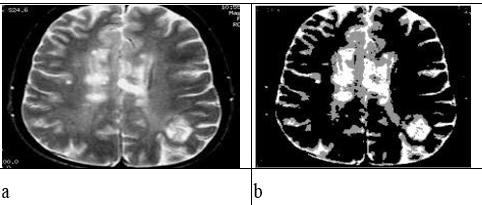Best Classification of Continuous Data Based on Hybrid Decision Tree
Keywords:
Classification, Continuous Data, DBSCAN, Hybrid Decision Tree.Abstract
The correct classification of continuous data and finding classification algorithms with high accuracy to classify previously invisible records is one of the most important real problems facing researchers in the computing world, especially with continuous data, which always suffers from classification errors due to the slitting of the data into periods or discretization. In this paper, we present a hybrid algorithm that uses the principle of a decision tree, excluding the concepts of entropy and information gain in order to avoid splitting continuous data and replacing them to form the period based on concepts like the counters In the training process, the periods of continuous data will be self-dividing, meaning that the periods of continuous data are self-forming, which takes into account the composition of the period or split data based on the first and last element of the larger counter. And so on, right up to the counter with the fewest number of data points. The experimental result gave a very good rating of 95.56%, which means better results in the handling and classification of continuous data.
Downloads
References
D. Computing and I. Santos I. Salazar M. Santamar A. and Bringas PG “Collective Classification for the Detection of Surface Defects in Automotive Castings” 8th IEEE conference 2013:941-946. 2017.
Y. Y Song, and L. U Ying, “Decision tree methods: applications for classification and prediction” Shanghai archives of psychiatry, 27(2): 130. 2015.
G, Mitra S, and S. BKA,“simple data discretizer”
,http://arxiv.org/abs/1710.05091. 2017.
Z. Cebeci, & F. Yıldız, “Unsupervised discretization of continuous variables in a chicken egg quality traits dataset”, Turkish Journal of Agriculture-Food Science and Technology, 5(4): 315-320. 2017.
P. Kanmani, P. Marikkannu, and M. Brindha, “A Medical Image Classification using Id3 Classifier”, Sri Ramakrishna Institute of Technology, Coimbatore, India 3(10): 27- 30. 2016.
X. Wang, X. Liu, W. Pedrycz, & L. Zhang, “Fuzzy rule based decision trees”, Pattern Recognition, 48(1): 50-59. 2015.
M. Norouzi, M. Collins, M. A. Johnson, D. J. Fleet, & P. Kohli,
,”Efficient non-greedy optimization of decision trees”, In Advances in neural information processing systems, pp. 1729-1737. 2015.
F. Riaz, K. Kamal, T. Zfar, and R. Qayyum, “An inspection approach for casting defects detection using image segmentation”, In Mechanical, System and Control Engineering (ICMSC), pp. 101- 105. 2017.
J. Naik, and S. Patel, “Tumor detection and classification using decision tree in brain MRI”, International Journal of Computer Science and Network Security (IJCSNS), 14(6): 87. 2014.
P. K. Aparna, & D. R. Shettar, “Hybrid Decision Tree using K- Means for Classifying Continuous Data”, International Journal of Innovative Research in Computer and Communication EngineerinG 3(10): 32-37. 2015.
H. H. Patel, and P. Prajapati, “Study and analysis of decision tree based classification algorithms”, International Journal of Computer Sciences and Engineering, 6(10): 74-78. 2018.
W. Al-Hameed, and N. Fadel, “Defect Detection Based Optimized Threshold of Decision Tree”, Journal of Computational and Theoretical Nanoscience, 16(3): 914-919. 2019.
W. Al-Hameed, and N. Fadel, “Fuzzy Logic for Defect Detection of Radiography Images”, Journal of Computational and Theoretical Nanoscience, 16(3): 1023-1028. 2019.
F. Zunlin, Bi. DUYAN,” Low-level structure feature extraction for image processing via stacked sparse denoising auto encoder” , Elsevier 243(21): 12-20. 2017.

Downloads
Published
How to Cite
Issue
Section
License

This work is licensed under a Creative Commons Attribution-ShareAlike 4.0 International License.
All papers should be submitted electronically. All submitted manuscripts must be original work that is not under submission at another journal or under consideration for publication in another form, such as a monograph or chapter of a book. Authors of submitted papers are obligated not to submit their paper for publication elsewhere until an editorial decision is rendered on their submission. Further, authors of accepted papers are prohibited from publishing the results in other publications that appear before the paper is published in the Journal unless they receive approval for doing so from the Editor-In-Chief.
IJISAE open access articles are licensed under a Creative Commons Attribution-ShareAlike 4.0 International License. This license lets the audience to give appropriate credit, provide a link to the license, and indicate if changes were made and if they remix, transform, or build upon the material, they must distribute contributions under the same license as the original.





